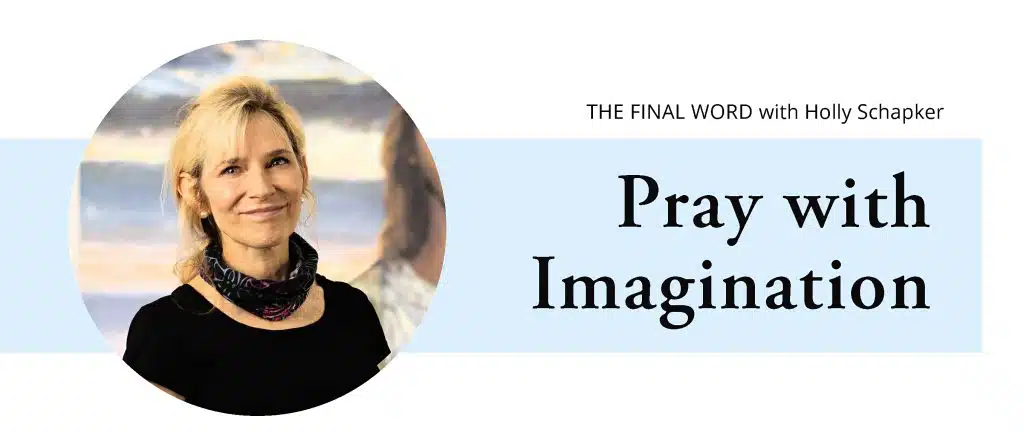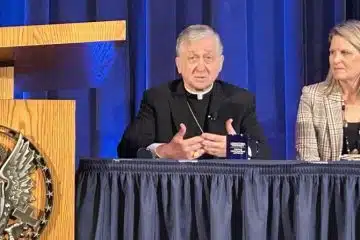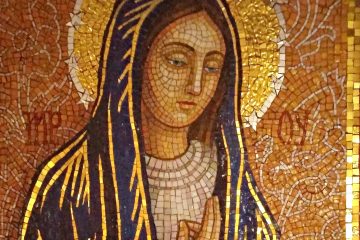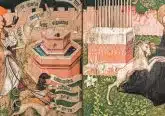Pray with Imagination
 Great Catholic theologians have said to “begin with beauty” when sharing the Good News of Christ, for beauty has the ability to bypass reason and appeal directly to our heart and soul. In art, our commitment to this beauty portrays the truth of our faith, which pierces the culture surrounding us “like an arrowhead,” as Bishop Barron said.
Great Catholic theologians have said to “begin with beauty” when sharing the Good News of Christ, for beauty has the ability to bypass reason and appeal directly to our heart and soul. In art, our commitment to this beauty portrays the truth of our faith, which pierces the culture surrounding us “like an arrowhead,” as Bishop Barron said.
Led by the Holy Spirit, this way of beauty has drawn me from deep flaws to fruitful works for the greater glory of God.
The Council of Trent enjoined artists to bring people back to the Catholic Church. Caravaggio, a counter-reformation artist, was not the perfect Catholic—seriously, we know of him through his police records. But his art and that of other artists from his era brought people back into the fold. Art served the Church then, as it can now.
I don’t claim to be the next Caravaggio; I still remember seeing his self-portrait, painted when he was 17, in the Galleria Borghese Museum in Rome. I was blown away! And intimidated—I wanted to throw away my brushes and call it quits. But I learned to switch my focus to God rather than my limited self, and became convinced that God places a brush in my hand to do something for souls and for His glory.
There was a time many years ago when I was not going to church. As St. Augustine described himself, I was mostly restless and confused. I set out to complete a series of works based on Ignatius Loyola for Xavier University, my alma mater. To prepare I completed the Spiritual Exercises with the late Brother Daryl Burns, who was my spiritual director. It changed my life.
The Spiritual Exercises teach us how to pray creatively with our imagination. An intended fruit is to see God at work, even in the small things of our daily lives. This awareness is captured well in a poem by a Medieval poet, Hafiz. Specifically, this line opened my heart with a joyful new perspective: “Today–The vegetables would like to be cut / By someone who is singing God’s name.” The same can be said for my brushes that want to be held by someone singing God’s name. My paints wish to express gratitude for creation, and my blank canvases are hoping to become a form of high praise.
Pope St. John Paul II said, “Not all are called to be artists in the specific sense of the term. Yet, as Genesis has it, all men and women are entrusted with the task of creating their own life; in a certain sense, they are to make it a work of art, a masterpiece.” I pray that the next chapter of our Church history is written about how we attract the hearts of the faithful.
Sure, there is great division in our world and Church today, but the opposite statement is also true: Things are good. When I work intensely on a painting, I start to lose the ability to see it. I need to flip the canvas upside down or see its reflection in the mirror for a new perspective. We often just need a change of perspective, and art can give us that: Where sin abounds, grace abounds all the more.
The same Spirit that created the universe with love will always overpower any other force. And we can trust in that Spirit pouring out His graces upon us today. Our singular courage and our strength are in the Lord. St. Ignatius taught us, “All for the Greater Glory of God.” That is the desired Sacred Masterpiece of my heart and my art.
HOLLY SCHAPKER is a sacred art artist whose work is displayed internationally. She resides in Cincinnati. Her paintings adorn the walls of local churches, Xavier University buildings, the offices of the Archdiocese and St. Mary’s Seminary & School of Theology. She co-authored Universal Mother – A Journal for Finding Yourself in Mary with art historian Dr. Cecelia Dorger.
This article appeared in the February 2025 edition of The Catholic Telegraph Magazine. For your complimentary subscription, click here.













